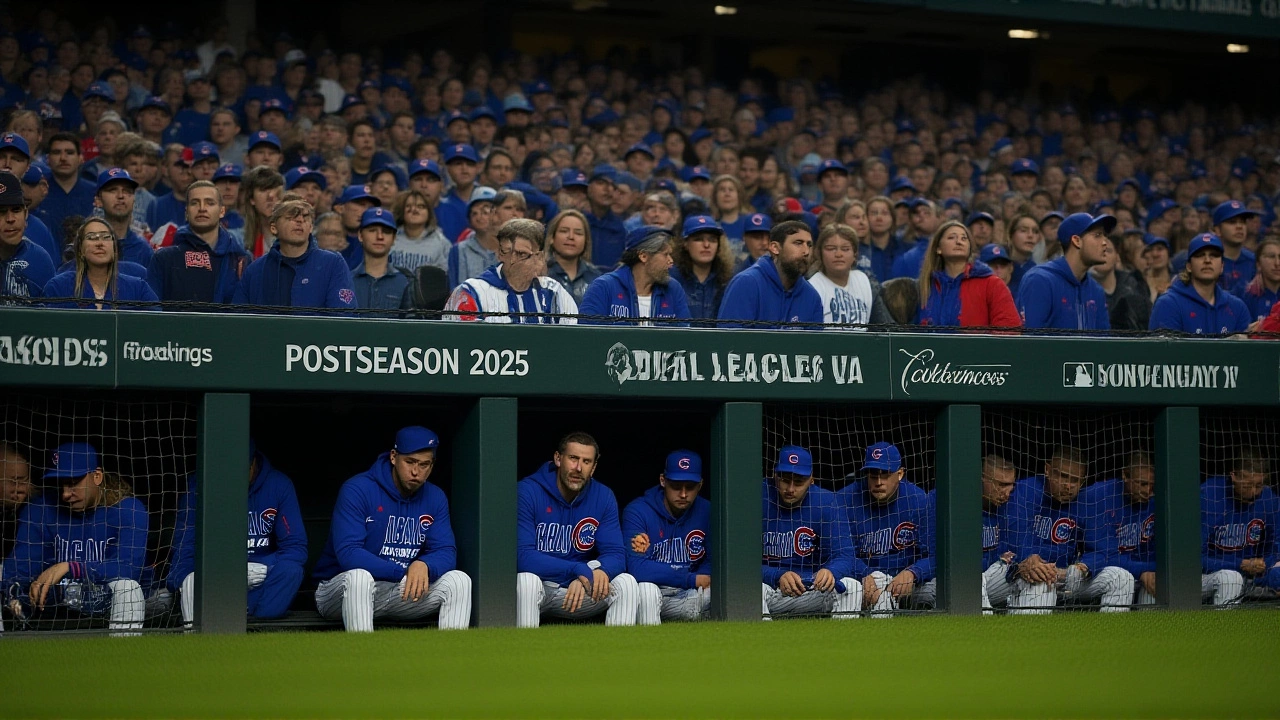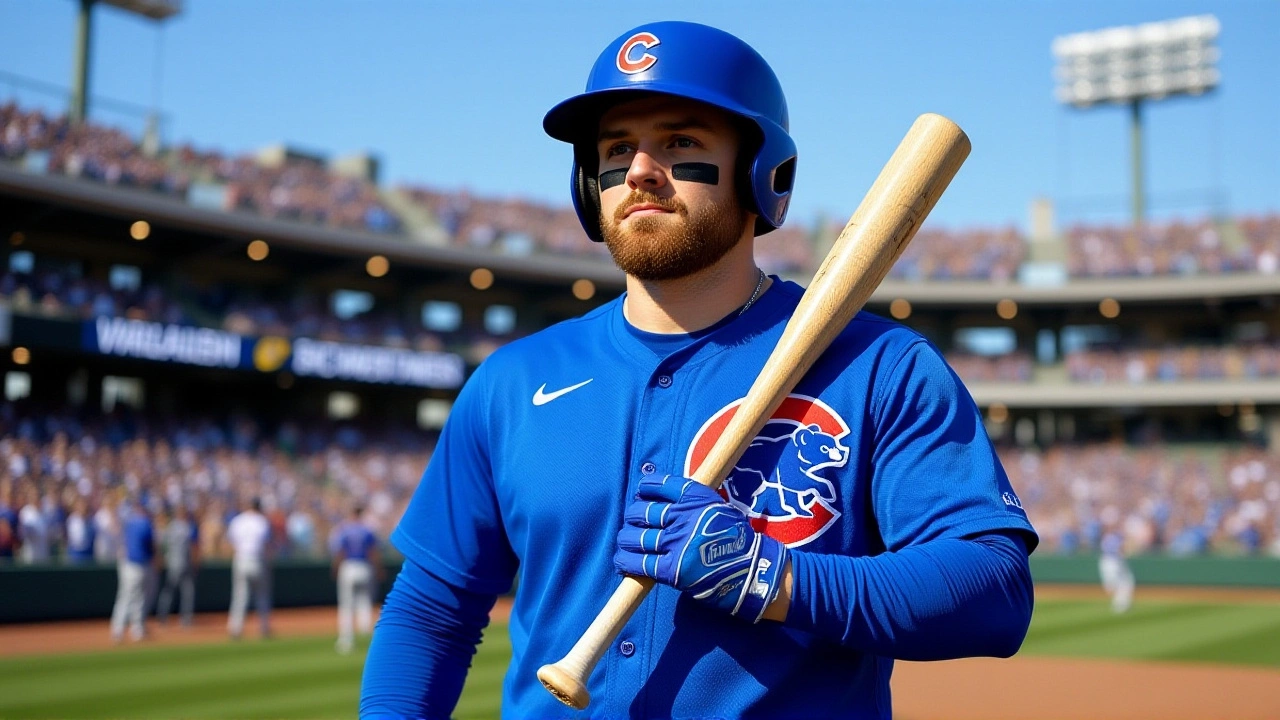When the Chicago Cubs unleashed a 6-0 shutout on the Milwaukee Brewers on October 9, 2025, the National League Division Series suddenly felt like a roller‑coaster that hadn’t finished its first loop. The win at Wrigley Field tied the best‑of‑five series at two games apiece and set up a winner‑take‑all Game 5 in Milwaukee.
- Final score: Cubs 6, Brewers 0
- Winning pitcher: Matthew Boyd (5⅔ innings)
- Key offensive spark: Matt Shaw drew his fifth walk of the series
- Decisive baserunning: double steal in the fifth inning
- Series now headed to Milwaukee for Game 5
Series Overview and Stakes
The National League Division Series various venues began with the Brewers holding a 2-1 series lead after three games. Chicago’s loss in Game 3 put them on the brink of elimination, so the pressure was palpable in the stands and on the field. Fans at Wrigley Field, a stadium known for its ivy‑covered walls and rowdy chants, sensed a chance to flip the narrative.
Game 4: How Chicago Took Control
Pitching Duel and Early Drama
Matthew Boyd, starting pitcher for the Cubs opened the game with a composed fastball mix, keeping the Brewers off‑balance for the first four innings. He surrendered just one hit before being pulled in the fifth inning with a 4‑0 lead. On the opposite mound, Freddy Peralta struggled to find his rhythm, exiting after two innings and leaving Milwaukee with a three‑run hole to fill.
Offensive Burst in the Fifth
The spark came when Matt Shaw drew a four‑pitch leadoff walk from reliever Trevor McGill. That was Shaw’s fifth walk of the series, a sign that Chicago was patiently waiting for a mistake. Michael Bush followed with a strikeout, but the damage was done – two runners were now on base with nobody out.
Next up, Nico Hoerner placed a single into right field, pushing the runners into scoring position. With two on and one out, McGill completed his work and the Brewers turned to left‑handed specialist Aaron Ashby. Ashby faced a thick‑set swing from Kyle Tucker (who was pinch‑hitting for the Brewers) and induced a groundout, ending the inning with the score still at 4‑0.
Aggressive Baserunning Pays Off
Chicago’s next move was bold – a double steal. Both runners took off as the catcher tried to make a throw to third, but the ball arrived too late. The second runner slid safely, and the Cubs added two insurance runs on a sac fly, swelling the lead to 6‑0. The aggressive baserunning, something Cubs manager David Ross has emphasized all postseason, showcased the team’s willingness to take calculated risks.
Bulldog Bullpen Holds the Line
After Boyd’s exit, the Cubs’ bullpen—led by Ryan Tepera and Justin Steele—kept the Brewers off the scoreboard for the remaining innings. Milwaukee’s lineup, which had been hovering around a .260 batting average through the series, went 0‑11 in the final four frames.
Reactions from Players and Coaches
After the final out, Cubs shortstop Chris Taylor smiled and said, “We knew we could bounce back. This is what postseason baseball feels like – you have to stay hungry.” Brewers manager Peter Girardi admitted, “We were a little flat early. The double steal was a painful reminder that we need to tighten up.”
Boyd, who earned the win, reflected, “I felt good out there. The defense backed me up, and the guys in the bullpen gave me the confidence to go after those early runs.” Meanwhile, Ashby, the left‑handed reliever who stopped the bleeding, noted, “I just tried to find my spots and trust the movement on my pitches.”

What Game 5 Meant for Milwaukee
Heading back to Miller Park (now officially Milwaukee) for Game 5, the Brewers faced a daunting challenge: overcome a six‑run deficit in a winner‑take‑all scenario. The team responded by revving up its offense, ultimately winning 3‑1 to break a five‑year streak of postseason disappointments. The victory was a morale boost for a franchise hungry for deeper playoff runs.
Brewers’ star outfielder Luis Urias delivered a clutch RBI single in the seventh inning of Game 5, a moment that reminded fans why Milwaukee finally moved past the “cursed” label that had haunted them since 2020.
Broader Implications for the NLDS
The back‑and‑forth between Chicago and Milwaukee highlighted the increasing parity in the National League. Teams that relied heavily on power hitting found themselves vulnerable to opportunistic baserunning and disciplined pitching. For the Cubs, the Game 4 win proved that even after an elimination loss, a well‑executed game plan can reset a series.
Analysts now argue that the NLDS will continue to favor clubs that blend veteran poise with aggressive small‑ball tactics. As the Brewers head into the NLCS, their ability to rebound from a shutout will likely shape their narrative for the rest of the postseason.
Frequently Asked Questions
How did the Cubs manage to shut out the Brewers?
Chicago combined a strong start from Matthew Boyd with a bullpen that never yielded a hit after the fifth inning. Defensive positioning, timely strikeouts from relievers, and a disciplined approach at the plate kept Milwaukee from stringing together any run‑producing opportunities.
What was the significance of the double steal?
The double steal turned a potential one‑run inning into a two‑run surge, extending the lead to six runs. It also forced the Brewers to use a left‑handed reliever earlier than planned, disrupting their bullpen strategy.
Why did Game 5 shift to Milwaukee?
The NLDS follows a 2‑2‑1 home‑away format. After two games at Wrigley Field and two at Miller Park, the decisive fifth game returns to the higher‑seeded team's park – in this case, Milwaukee, which earned the better regular‑season record.
What does this series tell us about the Cubs' postseason outlook?
The Cubs demonstrated resilience by forcing a Game 5 after facing elimination. Their blend of veteran pitching and aggressive baserunning suggests they can adapt quickly, a trait that could serve them well in a potential NLCS run.
How did the Brewers rebound to win Game 5?
Milwaukee tightened its pitching, with rookie starter Brandon Woodruff limiting the Cubs to one run. Offensively, timely hits from Luis Urias and a solid fourth‑inning rally provided the margin they needed to snap their playoff woes.
